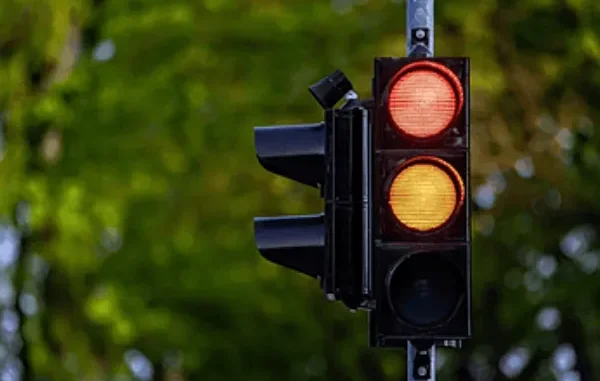

Las Vegas stands as one of the busiest cities in Nevada, known for its round-the-clock entertainment, casinos, and a thriving tourism economy. Millions of visitors arrive every year for conventions, concerts, and nightlife on the Strip.
This heavy activity results in constant traffic flow, making traffic laws vital for safety. Local authorities enforce strict rules to control congestion and reduce accidents. With so many vehicles navigating the streets daily, violations at intersections unfortunately lead to collisions.
Drivers who get hit at red and yellow light accident situations often face confusing issues around liability, insurance claims, and legal rights. Knowing how Las Vegas traffic laws handle these violations can help both residents and visitors stay safe on the road and avoid costly mistakes.
Understanding Red-Light & Yellow Light Violations
Running a red light occurs when a driver enters an intersection after the light has turned red. In Las Vegas, this counts as a serious traffic offense. Nevada Revised Statutes sets fines, license points, and sometimes even court appearances for offenders.
More importantly, red light violations often cause side-impact collisions, which can result in severe injuries. Law enforcement treats red light running as reckless driving because it disregards both law and safety. Courts, on the other hand, impose harsher penalties when the violation leads to a crash.
A yellow light signals that the traffic signal will soon change to red. Drivers must either stop safely before the intersection or clear it if they are too close to stop without sudden braking. Problems arise when drivers interpret yellow as an invitation to speed through.
In Las Vegas, failing to stop at a yellow when possible can count as a violation. Officers evaluate whether the driver had enough time to stop safely. If an accident occurs, liability depends on witness statements, video footage, and the officer’s report.
Liability After a Red or Yellow Light Crash
Determining liability becomes complicated after a light-related crash. Nevada follows a comparative negligence system, which means each party’s degree of fault affects compensation. For example:
- A driver who runs a red light and strikes another vehicle usually bears the majority of fault.
- A driver who accelerates through a yellow despite having time to stop may share liability.
- If both drivers made errors, the fault may be divided between them.
This system affects insurance payouts and potential lawsuits.
What Penalties Apply to Drivers?
The Nevada Department of Motor Vehicles imposes demerit points for traffic violations. A red light violation adds four points to a driver’s record, while reckless driving or repeat offenses may result in license suspension. Fines range from $150 to $300, and court fees may add to the cost.
For accidents causing injuries, drivers may also face civil lawsuits and increased insurance premiums.
Violations That Affect Insurance Claims
Insurance companies investigate intersection crashes carefully. Adjusters usually review police reports, camera footage, and witness testimony. If the investigation shows that a driver ignored a signal, insurers may deny coverage or reduce settlement amounts.
Victims of these crashes must prove the other driver’s negligence caused their injuries. Strong evidence makes the difference in securing fair compensation.
How Can Drivers Protect Themselves?
Drivers in Las Vegas can take practical steps to avoid red and yellow light accidents:
- Approach intersections at safe speeds.
- Treat yellow lights as warnings, not as opportunities to rush.
- Remain alert to cross traffic and pedestrians.
- Use dash cameras to document any incident.
These habits reduce risks and strengthen legal protection if an accident occurs.
Intersections Pose Such High Risks
Intersections combine vehicles traveling in multiple directions, pedestrians crossing, and cyclists navigating the same space. When drivers fail to obey signals, the chance of a collision multiplies. Side-impact crashes at intersections usually result in head, neck, and spinal injuries.
These risks explain why Las Vegas law enforcement prioritizes strict enforcement of signal compliance.
Finally, it’s essential to understand the following:
- Las Vegas traffic volume makes strict enforcement of red and yellow light laws essential.
- Running a red light or misjudging a yellow light leads to severe collisions.
- Victims who get hit at red and yellow light accident situations must prove the other driver’s negligence.
- Nevada’s comparative negligence system means fault may be shared.
- Drivers can protect themselves by slowing at intersections and treating yellow lights cautiously.






Leave a Reply